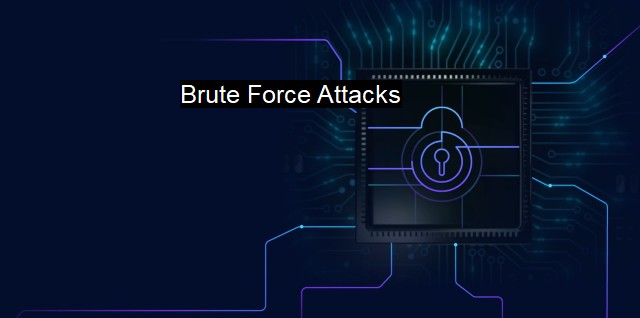What are Brute Force Attacks?
Brute Force Attacks: A Serious Threat to Cybersecurity and How They Work"\n- Understanding Automated Techniques Used to Crack User Login Credentials and Encryption Key
In the vast field of cybersecurity and antivirus, "Brute force attacks" is a term routinely referred to that signifies an authentication process trial strategy employed by cybercriminals to gain unauthorized access to a system or sensitive data.A brute force attack is fundamentally a rudimentary approach to breach a system’s security design; it is widely considered effective against weak protection mechanisms. This type of attack is centered around the speculative action based on 'trial and error', exerting the relentless tactic of exhausting every assignable permutation until access is successfully gained.
The brute force attack utilizes an exhaustive approach, it relentlessly works through all possible combinations of passwords until it inevitably stumbles upon the correct one. The methodology applied is simple, employing the systematic approach of sequentially checking all possible keys or passwords until the right one is found. Many might consider this a rudimentary or primitive form of attack, yet it's a looming threat with the potential to effectively crack weak passwords, which unfortunately are often in wide use.
If we equate the authentication mechanism or the defensive strategy to a padlock designed to safeguard precious possessions, the brute force attack strategy would be using every possible key combination until discovering the one that fits perfectly, disengaging the locks' safeguarding mechanism completely.
The timeline for such an attack varies drastically depending on several conglomerating factors, including the complexity of the password and the resources available to the attacker. In simpler terms, a brute force attack undertaken on a four-digit password would be completed in substantially less time than the duration required for deciphering a substantially lengthy and intricate alphanumeric password laced with special characters.
Brute force attacks aren't necessarily confined to password decryption, they are also perilous in the credit card fraud industry, these insidious attacks are meticulously designed to guess credit card information. brute force attacks may be employed to decode encrypted data or files, making them versatile and a broadly encompassing security concern.
In terms of cybersecurity and antivirus, countering brute force attacks can be challenging due to the inherent straightforward aspects of this attack type. Protection strategies often involve the utilization of robust, complex, and frequent password alterations, two-factor authentication, limiting failed login attempts, and the temporary or permanent blockades for user accounts that experience a high frequency of incorrect entries. additional defensive layers, such as CAPTCHA, to differentiate humans and bots can enhance the obstacles an attacker must surmount, significantly decreasing the probability of a successful blow in this digital warfare.
Antivirus software and firewalls also serve as notable reinforcements against brute force attacks, immediately flagging illicit activity that exhibits brute force attack manifestations. Modern antivirus technologies are echelons above their preceding generations, capable of identifying an attempted brute force attack and instantly elevating system security levels, camouflaging itself whilst actively working on repelling the attack.
Brute force attacks are a persistent threat that systematically exploits low-hanging fruits on the security tree. Its simplicity is counteracted by an effective arsenal introduced by cybersecurity and antivirus innovations limiting the attacks' viability. Regardless, the offensive preventive measures that the home and workplace impart, such as accessible guidelines for password strength complexity and change frequency, can inflex the susceptibility to such diligent assailant's malevolent endeavors. The rule of thumb for defense against brute force attacks remains to outsmart the perpetrator by staying a step ahead, habitually refining the security measures currently in place.

Brute Force Attacks FAQs
What is a brute force attack?
A brute force attack is a hacking technique that involves attempting to crack a password or encryption key by systematically trying all possible combinations until the correct one is found.How does a brute force attack work?
A brute force attack works by using specialized software that tries every possible password combination until it finds the correct one. This can take a long time, especially if the password is strong and complex.What can I do to protect against brute force attacks?
To protect against brute force attacks, you should use strong, complex passwords that are difficult to guess. You should also use two-factor authentication wherever possible, as this adds an extra layer of security. Additionally, you can use anti-virus software that can detect and prevent brute force attacks.What are some common targets of brute force attacks?
Some common targets of brute force attacks include websites, servers, and individual user accounts. Hackers may also try to crack encryption keys in order to gain access to sensitive data such as passwords, credit card numbers, and other personal information.| | A | | | B | | | C | | | D | | | E | | | F | | | G | | | H | | | I | | | J | | | K | | | L | | | M | |
| | N | | | O | | | P | | | Q | | | R | | | S | | | T | | | U | | | V | | | W | | | X | | | Y | | | Z | |
| | 1 | | | 2 | | | 3 | | | 4 | | | 7 | | | 8 | | |||||||